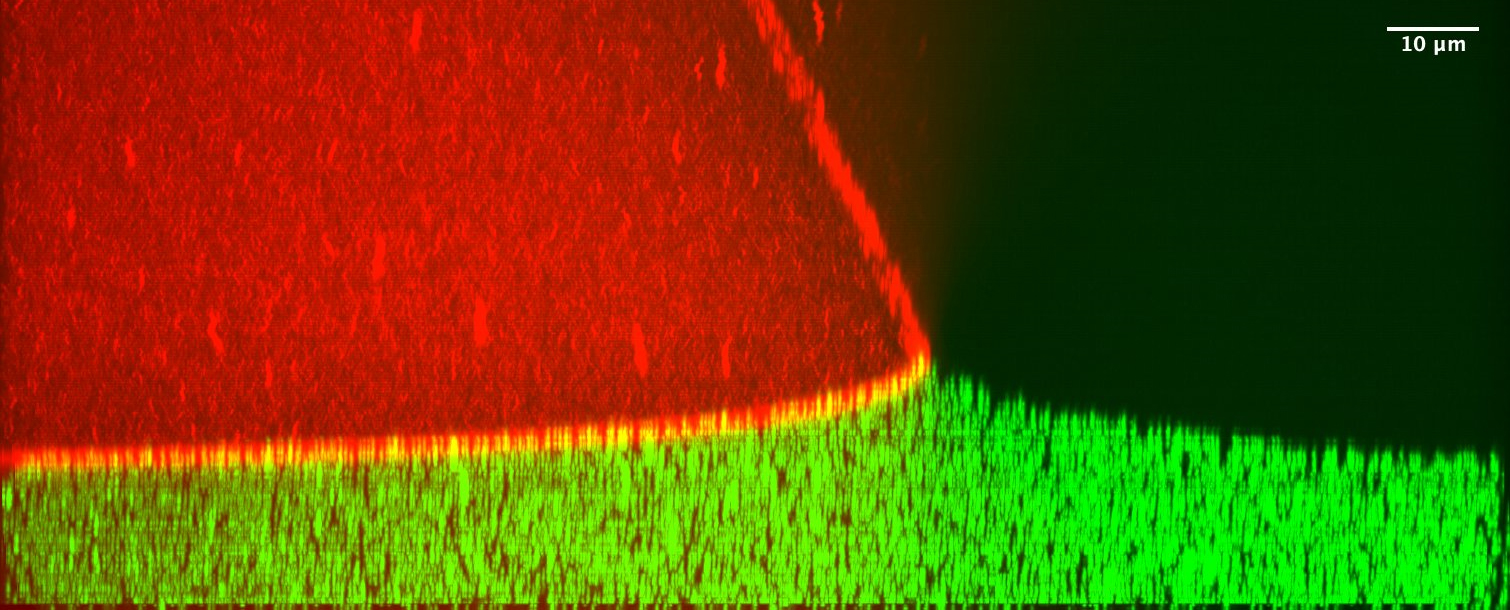Paper published
In a new paper in PRX, Jinyoung Kim and his co-authors have demonstrated a new way to overcome contact angle hysteresis for soft materials.
Measuring the contact angle of a droplet on a surface is an old, but extremely sensitive technique for characterising the properties of a surface. For example, imagine putting a water droplet on a teflon-coated frying pan — this will ball up with a high contact angle, immediately telling you that the surface is hydrophobic. The effectiveness of this technique means that it is still widely used in both academia and industry. However, a problem arises on most real surfaces that the contact angle has hysteresis, meaning that it can only be identified as being somewhere between two limits, which can be often quite far apart. This poses a major difficulty for accurate surface characterization.
In a new paper in PRX, Jinyoung Kim and his co-authors have demonstrated a new way to overcome this for soft materials. They measured microscopic deformations underneath a droplet, and used these to measure equilibrium surface properties of a soft hydrogel, a material where the surface is normally extremely difficult to characterize. They hope that this technique will further give insight into the physics of wetting and the problem of how hysteresis arises on soft materials.
Jin Young Kim, Stefanie Heyden, Dominic Gerber, Nicolas Bain, Eric R. Dufresne, and Robert W. Style, Measuring Surface Tensions of Soft Solids with Huge Contact-Angle Hysteresis. Phys. Rev. X 11, 031004
external page DOI:https://doi.org/10.1103/PhysRevX.11.031004
